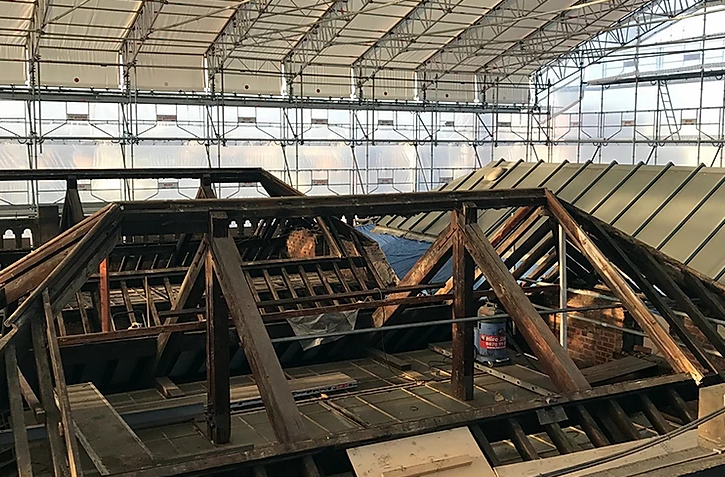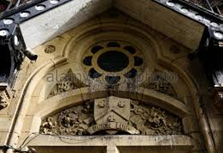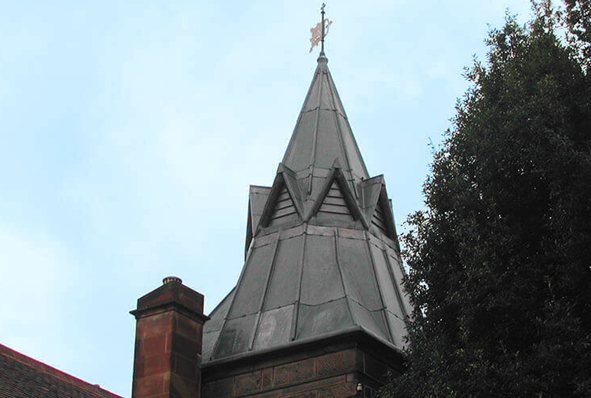Heritage Roofing
Heritage roofing - maintaining our iconic buildings
The UK is home to some of the most iconic buildings in the world, from stunning churches and cathedrals to historic stately homes. Each and every one of these remarkable feats of architecture requires regular maintenance to ensure they remain in the very best condition, allowing them to be enjoyed for generations.
Cathedral Care
Restoration and upkeep of cathedrals
There are some 42 Anglican cathedrals in the UK, not to mention 20 or so Catholic cathedrals. Cathedrals form the most important collection of historic buildings in England. The largest and most ancient are internationally famous, the smallest are usually among the most significant buildings in their region and even the most recent are architectural masterpieces.
Master Craftsmen
Championing our heritage with modern craftsmanship
Twenty years ago, English Heritage (now Historic England) published its first-ever Register of Buildings at Risk across England, which featured nearly 2,000 buildings and monuments that were ‘neglected, broken and unloved’. Recently Historic England was delighted to announce that over two-thirds of those buildings were now safe, in both urban and rural areas right across the country.
Traditional Lime
Lime: it’s better for buildings – and for the environment
It is now fairly well known that cement is not good for old buildings and that lime mortar should be used. But why? What are the advantages and what are the disadvantages? In order to begin to answer those questions it is necessary to understand the nature of traditional building, the process by which buildings used to be built, and how it differs from modern construction, the process by which we build today.
Audio Visual
Audio visual equipment in church buildings
This guidance is issued by the Church Buildings Council under section 55(1)(d) of the Dioceses, Mission and Pastoral Measure 2007. As it is statutory guidance, it must be considered with great care. The standards of good practice set out in the guidance should not be departed from unless the departure is justified by reasons that are spelled out clearly, logically and convincingly.
Read More...
CRE Events
After the Midlands, onward to Milton Keynes
"CRE Midlands reminded me of the giddy days when it first began – the venue was packed with exhibitors and visitors and there was a busy atmosphere. The whole thing looked great."
Insurance
You need to ensure that reasonable precautions are in place at your church to keep it safe for those who use it. To do this, you need to think about what might cause harm to people.
You will then need to decide if the precautions already in place are adequate. If they are not, you may need to identify further action to prevent any danger. When done formally, this is known as a risk assessment.
Church Maintenance
Church maintenance and repair: Calendar of Care
Just as prevention is always better than cure, maintenance is preferable to major repairs. But, such repairs may not always be avoidable. Church Care offers a monthly guide in our coming issues Starting in Spring
We can help you understand the common problems and areas that need your special attention, and give you tips for regular maintenance schemes.
Pest Control
Michael Palin warns of pest threat to churches
Michael Palin is supporting the future of the UK’s historic churches and chapels with a voiceover for a new animated film. The 80 second animation, produced for the National Churches Trust, highlights why churches are some of the nation’s best loved buildings.
Town Halls
The history of the great Victorian Town Halls of Northern England
From industrial squalor to civic pride, the story behind some of the most impressive buildings of the North involve a unique mix of economics, grand designs and noble sentiments within communities.
Lead Roofing
Lead is one of the oldest materials in the roofing industry and is still commonly used throughout the world today.
Lead roofing is a traditional roofing method which has been used in the industry for hundreds of years, and is therefore proven to be extremely reliable. Lead roofing, and sand-cast lead, in particular is ideal for old buildings such as churches or historical renovations, whereas milled lead roofing is a mass-produced alternative, used for precision and accuracy in homes and commercial buildings alike.
Lightning Protection
When lightning strikes are you protected against this act of God?
The issue of lightning protection in churches is one that has exercised this publication for many years. In this four-part series of spotlights on the issue we will be revisiting various aspects of the subject, beginning with an overview of current thinking.
SEARCH OUR DIRECTORY
Watercress Line's New Workshops
The first major phase of the Mid Hants Railway’s latest Heritage Lottery Fund (HLF) project has been completed and will be formally opened on Wednesday February 17th by song writer, record producer and railway enthusiast Pete Waterman
.The railway announced the award of the HLF grant of £550,000 at the end of September 2008, towards a project expected to cost over £1.1m in total. It was agreed to split the project into two phases, the first of which is now complete at a cost of about £450,000, with the HLF funding some £210,000. In addition to the construction of two new workshops, one for boiler work and one for carriage & wagon restoration and maintenance, the scheme involved the employment of up to five new members of staff, two of whom were to be apprentices – one in the boiler department and one as a joiner / carpenter.
The very difficult financial situation in late 2008 prompted a search for additional external funding. The railway was delighted to be awarded a grant of £9,500 from the BAT Legacy Fund. This was specifically to cover the 50% of the apprentices’ costs not paid for by the HLF. Thus these two new young apprentices are fully funded by external grants, for which we, and they, are extremely grateful. The railway is very aware of the need to pass on key skills to the younger generation.
The railway has also taken on a skilled joiner / carpenter who will be responsible for restoration of three old wooden bodied coaches, the renovation for public appreciation of a wooden signal box and the training of one apprentice. Appointment of the other two members of staff for education and interpretation will take place later.
The two new workshops have large viewing galleries that will incorporate interpretation materials to explain to the visitors the tasks being undertaken in the workshops. This meets one of the HLF’s key objectives of heritage education for our visitors.
The railway has employed several local businesses to provide professional support in terms of architect, structural engineer, quantity surveyor etc. Detailed design was completed in Autumn 2008 and a tender process undertaken. This resulted in the selection of Conja, a company based in Headbourne Worthy, as main contractor.
A contract was awarded in Spring 2009 and work started in July. The boiler workshop was essentially complete by early October when the focus moved to the Carriage & Wagon workshop, the bulk of which was finished by the end of the year, on time and on budget.
The timing of the second phase of the project is dependent upon when the railway’s finances have recovered sufficiently from the expenditure of some £250,000 on this current phase; with ongoing salary obligations to the new members of staff. However, it is expected to complete the project by 2012.
This is the third grant awarded by the HLF to the Watercress Line. The Old Goods Shed at Alresford was restored with the aid of a substantial grant and re-opened 10 years ago, and the Ropley wheel drop shed was built in 2005.
David Snow, who has co-ordinated the project, said ‘We are extremely grateful to the Heritage Lottery Fund for making this award, and to their flexibility in working with the railway to cope with the financial pressures of last year. Thanks are also due to the BAT Legacy fund for their contribution to the costs of employing our two apprentices. We are delighted with the excellent working relationship with the main contractor Conja, which has in no small way been due to the close liaison between their project manager Dave Allam and Andy Netherwood the railway’s boiler foreman.
The railway has struggled with inadequate working and visitor conditions for many years, and these new facilities (together with those anticipated under phase two) will make a huge difference. They will also make working on the Watercress Line much more attractive to our engineering volunteers.”
Stuart McLeod, Head of the Heritage Lottery Fund in the South East, said: “We’re delighted to see the Mid Hants Railway complete the first phase of its work. We hope that, having braved the challenging economic situation of the last eighteen months they will be able to take the project forward to phase two to realise their full plans for the railway and its visitors.”
Andy Netherwood, boiler department foreman, is one beneficiary of the better working conditions. He said ‘I am delighted with the new facilities, which put the Mid Hants Railway into a different league when it comes to boiler repairs. We will now be able to do much more work in house, and enter into contracts with other railways. I am really looking forward working in this new purpose built environment






































